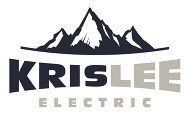Enjoying a Shock-Free Summer
Essential Electrical Safety Tips

As the days grow longer and the temperatures rise, summer brings with it a myriad of outdoor activities, vacations, and fun-filled adventures. Amidst all the excitement, it's easy to overlook potential electrical hazards that can arise during this season. From outdoor festivities to home maintenance tasks, understanding and practicing summer electrical safety is crucial for keeping yourself and your loved ones safe. So, before you dive headfirst into summer fun, let's explore some essential electrical safety tips to ensure a shock-free season.
Outdoor Entertainment Safety
From backyard barbecues to poolside parties, outdoor entertainment is a staple of summer. However, it's essential to use electrical devices and appliances outdoors safely:
- Water and Electricity Don't Mix: Keep electrical cords, outlets, and appliances away from water sources to prevent electric shocks and potential electrocution.
- Invest in Outdoor-Rated Equipment: Use only outdoor-rated extension cords, surge protectors, and electrical appliances designed specifically for outdoor use.
- Watch Out for Overhead Power Lines: When setting up outdoor activities, be mindful of nearby power lines, and ensure that any structures, such as tents or umbrellas, are far away to avoid accidental contact.
Pool and Water Safety
Pools and water-related activities are synonymous with summer fun, but they also present unique electrical hazards:
- Install Ground Fault Circuit Interrupters (GFCIs):Ensure that all outdoor electrical outlets near pools or water features are equipped with GFCIs to prevent electric shocks.
- Regular Inspections: Routinely inspect pool and hot tub equipment for signs of wear, damage, or corrosion. Promptly address any issues to prevent electrical accidents.
- Keep Electrical Devices Away from Water: Never use electrical devices or appliances near pools or water sources, and always keep them at a safe distance.
Outdoor Lighting
Summer evenings are perfect for outdoor gatherings and late-night stargazing, but proper lighting is essential for safety:
- Use Outdoor-Rated Lighting Fixtures: Install outdoor lighting fixtures that are specifically designed for exterior use to ensure safety and durability.
- Avoid Overloading Outlets: When setting up outdoor lighting, distribute the load across multiple outlets and avoid overloading circuits to prevent overheating and potential fires.
- Turn Off Unnecessary Lighting: When not in use, turn off outdoor lighting to conserve energy and reduce the risk of electrical hazards.
Storm Preparedness
Summer storms can bring heavy rain, strong winds, and lightning strikes, posing significant electrical risks:
- Stay Informed: Monitor weather forecasts and stay informed about incoming storms to take proactive measures.
- Unplug Electrical Devices: During severe weather, unplug electrical devices and appliances to prevent damage from power surges caused by lightning strikes or power outages.
- Invest in Surge Protectors: Install surge protectors to safeguard sensitive electronic equipment from power surges during storms.
- Think about purchasing a standby generator. Click here to read our post about generators.
Home Maintenance
Summer is an ideal time for home maintenance tasks, but it's essential to approach electrical projects with caution:
- Leave it to the Professionals: For complex electrical tasks or repairs, always hire a qualified electrician to ensure safety and compliance with electrical codes. Call us for your electrical repairs!
- Inspect Outdoor Wiring: Check outdoor wiring, such as extension cords and holiday lights, for signs of damage or wear. Replace any frayed or damaged cords promptly.
- Keep Flammable Materials Away: When using electrical equipment outdoors, keep flammable materials, such as gasoline or propane, at a safe distance to prevent fires.
Summer is a time for making memories and enjoying the great outdoors, but it's essential to prioritize electrical safety to prevent accidents and injuries. By following these essential tips, you can ensure a summer season that is not only fun and enjoyable but also safe and free from electrical hazards. So, as you embark on your summer adventures, remember to stay vigilant, stay informed, and stay safe.






Share On: